Shevlin Sebastian's Blog, page 58
March 14, 2018
A Baboon Creates Havoc
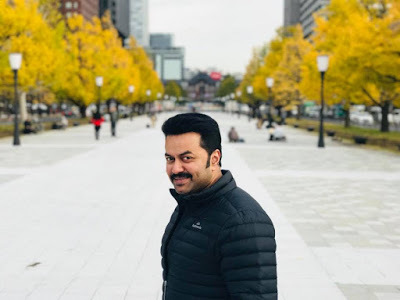

COLUMN: LOCATION DIARY
Actor Indrajith Sukumaran talks about his experiences in the films, ‘Naku Penta Naku Taka’, ‘Ezhamathe Varavu’, ‘Calcutta News’ and ‘Padayani’
Photos: Indrajith; with actor Bhama
By Shevlin Sebastian
Actor Indrajith Sukumaran drove the six-seater vehicle carefully to the shooting spot inside the Nairobi National Park at Kenya. Sitting beside him was actor Bhama. At the back was Vayalar Madhavan Kutty, the director of ‘Naku Penta Naku Taka’ (2014) and cameraman Krish Kymal. As Indrajith stopped at a clearing, he saw a baboon sitting some distance away, by the side of the road.
In order to get a closer look, he drove up to the grey-and-black baboon. “I was curious about it,” says Indrajith. “The baboon, unlike other monkeys, likes to eat meat. It kills deer. It has long incisors and can be dangerous.”
As the car went past slowly, the baboon just stared at them. Then its eyes rested on several red, green and yellow flowers which were placed at the back.
Soon, Indrajith returned to the original spot. Then another car came up. This consisted of people of the art department. The back door was lifted up. And one of the members took out some flowers and moved some distance away.
In the rear-view mirror, Indrajith could see Madhavan and Krish. A few seconds later, he saw a shadow. The baboon had raced up and jumped into the back.
“We all started screaming out of complete fear,” says Indrajith. “The baboon felt unnerved. It ran out but with some flowers. Maybe it thought they were fruits or vegetables.”
The next visual was of the baboon running away but it was dropping flowers all along the way. Soon, it vanished.
After heaving a sigh of relief, the group got out of the car. Preparations began for the shoot to start. But soon, there was an unexpected development. In the distance, the crew saw a group of ten baboons. “Just like human beings, the one who ran away had called his gang,” says Indrajth, with a smile. “As they were approaching, the guards said that it was no longer safe. So we immediately left in search of another location.”
For Hariharan’s film, ‘Ezhamathe Varavu’ (2013) Indrajith faced a danger of a different sort. The shoot was inside a forest called Kannavankadu near Thalassery.
Indrajith, who was playing a hunter, had to shoot a sequence where he had to walk into a river, go some distance, turn around and walk back. As he stood in the water, with a gun in his hand, and a backpack, suddenly he heard a shout, “Chetta, watch out, there is a snake.”
When Indrajith looked back, he saw an eight feet long thick black snake fall into the water with a splash barely five feet away. “I was frozen with fear,” he says. “Most probably, it was a viper.” Thankfully, the snake which had lost its balance and fell from a branch of an overhanging tree felt even more flustered. Using great strength, it fought the current and managed to reach the bank and slithered away. “That was a very close shave,” says Indrajith.
But Indrajith ran out of luck during the shoot of ‘Calcutta News’ inside a tram depot at Kolkata. It was the last day of the 75-day shoot.
At night around 60 people were supposed to leave for Kerala by train and plane. A fight sequence was being shot at 12 noon. The plan was that Indrajith would swing his fist towards a junior Bengali artiste. The latter would move to the right, snapping his head. However, when the shoot began, the artist moved to the left and by accident, his arm hit Indrajith smack in the middle of the nose. “Like a pipe being open, the blood just shot out,” he says. “Soon, my shirt was drenched. I felt groggy.”
The whole unit was shocked. Indrajith was quickly taken to a nearby hospital. However, after inspection, the doctor said there was no major damage. The blood had shot out because of the impact. Nevertheless, the shooting was cancelled along with all the rail and air tickets.
“The shooting was kept on hold because whenever I got up and walked fast, I would start bleeding again,” says Indrajith. “Anyway, it was eventually done on the fourth day. Many crew members had to stay on for a few more days, as they could not get tickets immediately.”
As Indrajith talks in his 15th-floor apartment in Kochi, all of a sudden, his mind goes way back into the past. The shoot of the film ‘Padayani’ (1986) was taking place outside their house in Ashok Nagar at Chennai. Mohanlal played the lead, while Indrajith, in his first-ever role, played the child Mohanlal.
“One day, my father [Sukumaran] told us that Mohanlal wanted to meet us,” says Indrajith. “I must have been six while Prithvi [actor Prithviraj] was only three. We were super-excited because we were fans.”
They ran down the stairs. Mohanlal was sitting outside on a chair. “He was very warm and friendly and had a smile on his face,” says Indrajith. “When Mohanlal is with children he behaves like a child. He made us feel very comfortable and hugged us. Then a photo was taken. It is there in my mother’s album.”
(The New Indian Express, Kochi, Thiruvananthapuram and Kozhikode)
Published on March 14, 2018 22:51
March 12, 2018
Something Is Better Than Nothing
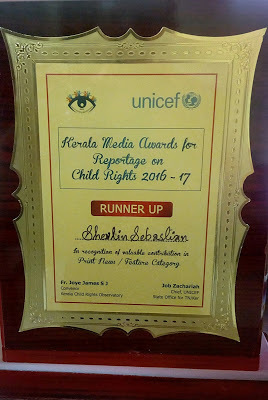
This award has been given by the Kerala Media Awards for Child Rights (English section), jointly instituted by UNICEF and Kerala Child Rights Observatory.Had focused on the seven-minute film, ‘No Go Tell’, which stars Mollywood star Nivin Pauly.Brought out by the NGO Bodhini, the aim of the film is to raise awareness among students about child sex abuse.The article appeared in the Kochi edition (April 22, 2017) of the New Indian Express.
Published on March 12, 2018 19:48
March 11, 2018
A House For Dr Srinivas And Family
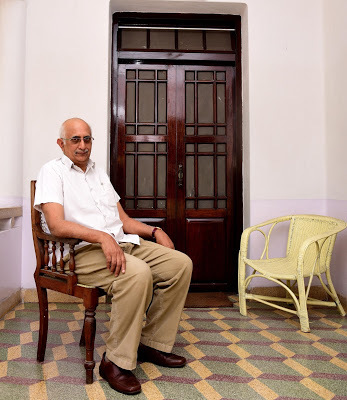
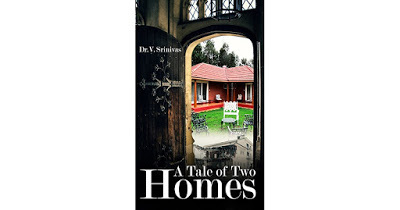
The Mumbai-based urological cancer surgeon V. Srinivas has written a book about his experiences, along with his wife, of building a house at Kotagiri in the Nilgiris
By Shevlin Sebastian
At Kotagiri, in Tamil Nadu, the Mumbai-based urological cancer surgeon V. Srinivas and his wife Vidya were building a homestay. Friends in Mumbai offered numerous suggestions. One friend Reena (name changed) suggested that they should use Burma teakwood for all the floors. Srinivas blanched when he heard that. “It will cost too much,” he said. But Reena said, “Why don't you find some old ship and get the wood from the deck? This is usually made of seasoned old Burma teak wood.”
As luck would have it, a new patient of Srinivas was from Bhavnagar in Gujarat and his business was ship-breaking. After the man recovered, the couple went with him to Alang, near Bhavnagar, which is the centre of ship-breaking in India.
There, the '1952 Manila Princess', which had been a floating casino in the Philippines was being dismantled. So, Srinivas bought a lot of teakwood at a very competitive price. Then, a driver agreed to take the entire material to Kotagiri, but he had never been beyond Hyderabad. “We were told that there was no insurance coverage for this type of transport and all we could do was to leave it to God,” says Srinivas.
In the end, the belief in God worked because on the fourth day, the wood did reach Kotagiri safely.
This anecdote was recounted in the just-released 'A Tale Of Two Homes' written by Srinivas and brought out by White Falcon Publishing. It tells the story of the trials and tribulations that the couple faced while trying to build a homestay on ten acres of land.
Initially buying the land was the problem. “One piece of land was owned by 18 cousins and relatives,” says Srinivas. “We had to get a lawyer to check all the papers to make sure everything was okay. Then we had to wait before we could acquire the next six acres.”
Asked why the couple wanted ten acres Srinivas says, tongue-in-cheek, “We wanted to avoid neighbours. In over-crowded Mumbai, we have too many neighbours all around us.”
Meanwhile, as construction went on, the couple got an insight into the mindset of the labourers. “The labourers need supervision,” says Srinivas. “They were working on five to six buildings at the same time, so they would disappear for a while. They also like their liquor. After working for six days, as soon as they got their wages they would go to the liquor shop. Thereafter, they would be absent for two days.”
But despite all that, the couple grew to love the local people. “The people are simple and honest,” says Srinivas. “After we bought the land, we were going to fence it, but then the local people told us, 'Nobody puts a fence'. In most places, the only thing marking a boundary were some white stones. So, we did the same. And, to our surprise, there were no squatters at all, unlike what would have happened in Mumbai.”
Srinivas and his wife faced other difficulties. Their architect was very strong on vaastu. But when the plans were drawn the couple felt that the bedrooms were very small. “We felt upset about it,” says Srinivas. “But then an architect friend of mine came from Mumbai and noticed that there were good verandahs. He told me that in the hills, the beauty is outside the house. So it would be better to have small bedrooms since guests will spend more time outside. Which turned out to be true.”
And throughout his book, Srinivas details numerous episodes in their nine-year odyssey to build their home. But eventually, it was all's well that end's well.
They called their homestay 'Raven's Nest', after their granddaughter and it is doing well. There are six rooms, out of which three are for the guests while the other three are for Srinivas and his family. “Visitors have come from Bangalore, Chennai, Delhi and Mumbai,” says Srinivas.
As for the doctor, every month, he, along with his wife, fly down from Mumbai and spend a week there. “We felt that if we have built a home, we should stay there often, especially in such a salubrious atmosphere as the Nilgiris,” says Srinivas. “It is a place that brings back memories.”
That's because Srinivas did his schooling in Lawrence School, Lovedale. So he has a soft spot for the Nilgiris.
Meanwhile, the book, which is an engaging read, is getting good reviews on Amazon. Says Dr Namrata, “I really enjoyed reading the book. It's not a book only on house building but about relationships. The humour is the USP. I can guarantee the book will sell and will have readers across all age groups.”
Adds Dr Thilak, ophthalmologist, “It is extremely interesting and well written. Got hooked on it.”
(The New Indian Express, Kochi and Thiruvananthapuram)
Published on March 11, 2018 23:49
March 9, 2018
The Master Composer Is Finally Rewarded .... After 50 Years!

By Shevlin Sebastian
It was like any any other day (Thursday March 8) for veteran music composer MK Arjunan. Till he sat on his sofa in the living room at his home in Kochi and switched on the TV. Suddenly, it was announced that he had won the Kerala State Award for Best Composer for the songs he composed for the film, 'Bhayanakam'.
Soon, Arjunan's house became a swirl of activity. Neighbours, friends and relatives dropped in. Television as well as newspaper journalists arrived in a rush. Arjunan received several congratulatory phone calls as well as messages.
But what was lost in this buzz was that it took 50 years for Arjunan to win his first-ever State Award. During that time he had composed the music for over 500 songs in more than 200 films. When this was pointed out to him, Arjunan burst out laughing. Then he regained his composure and said, “I have never thought about awards. For me, it has always been about the music.”
And it is also a fact, that many of his songs, like 'Ninmaniyarayile' and 'Dukhame ninakku', remain evergreen in the minds of listeners despite the passage of time.
As for 'Bhayanakam', the story was based partly on the novel 'Khayar' written by the late great writer Thakazhi Sivasankarapillai. “Since the story was set in World War 11, the songs had to remind viewers about that period,” says Arjunan. “[Director] Jayaraj had given me a clear idea on what he wanted, but it was not very tough for me. I used the harmonium, the tabla and the violin, and other traditional instruments.”
Asked about the music of today, Arjunan says, “The audience likes fast-paced songs. But the music is drowning the words, so we don't know what the song is all about.”
Another problem is that not much effort is expended to make a song. “In earlier days, we would spend as much as five hours to record the song, so that we could get it perfect,” he says. “Today, a singer only needs 15 minutes. The track is already there on the laptop. So, the beauty of songs is going down. I feel sad about this.”
(The New Indian Express, Kerala editions)
Published on March 09, 2018 18:20
March 6, 2018
Taking Candid Shots Of Amitabh Bachchan
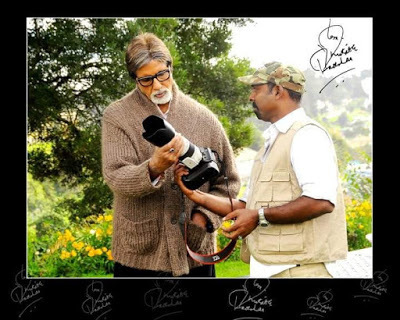
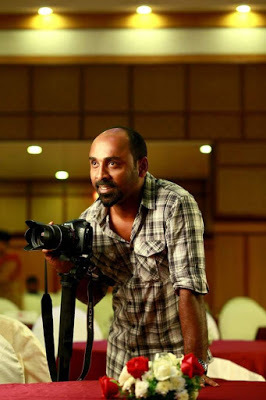
COLUMN: LOCATION DIARY
Photographer Rajesh talks about his experiences in the films, 'Kandahar', 'Sakthi', and 'Ratchagan'
By Shevlin Sebastian
On the sets of 'Kandahar' (2010), at Ooty, director Major Ravi noticed that Amitabh Bachchan was taking several photos of butterflies on his personal camera. So, he drew stills photographer Rajesh aside and said, “Take candid photos of Amitabh as he goes about taking these pictures.”
So Rajesh hid from view and took shots of Amitabh taking photos during breaks in the shoot.
“At the end of the day, I had about 50 photos,” says Rajesh. “When I showed them on the laptop to Major Ravi, he said, 'Super'.”
Then the duo went to Amitabh's trailer and showed him the photos. “Amitabh Sir got very excited and hugged me,” says Rajesh. “Then he told me, 'I did not know that I had so many expressions on my face'.”
Amitabh requested for the photos. Rajesh saved it on a USB drive and gave it to the superstar. “Then he told me that since he would be there for the next ten days, I should take more shots,” says Rajesh. So, he proceeded to do so on his Canon Mark 11. And sure enough, at the end of Amitabh's shooting stint, Rajesh once again presented another USB.
“Amitabh was very happy,” he says. “I was so grateful I could interact with such a big star.”
But not all interactions on the set are so pleasant. In KT Kunjumon's Tamil film, 'Sakthi' (1997) the shooting was taking place at Pollachi. In it, a few wild elephants were making a charge. To shoot the scene, the cinematographer Tirru, along with his assistant, was placed on a crane 45 feet high.
Beside him was Rajesh who wanted to take aerial shots. But things went wrong soon after. “Somehow, the mahouts lost control of the elephants and it came charging towards the crane,” says Rajesh. “We knew that if they hit the crane, we would fall to our deaths.”
But somehow, the mahouts and crew members retained their presence of mind. They burst firecrackers and distracted the elephants. The mammals stopped in their tracks and turned around. Thereafter, the mahouts were able to bring the elephants under control. “Watching from the top, I felt grateful to God for saving our lives,” says Rajesh.
There was another close shave during the shoot of Kunjumon's Tamil film, 'Ratchagan' (1997). The climax took place on the Chengalpet highway, 70 kms from Chennai. Nagarjuna was the hero, while this was Bollywood star Sushmita Sen's first Tamil film.
In the climax, Nagarjuna, on a bike, was chasing a truck which was driven by Sushmita. Up above, in a helicopter, a villain takes out a machine gun and shoots at Nagarjuna. There is another helicopter above the first. “Inside it, there was cameraman Ajayan Vincent, an actor, and myself,” says Rajesh.
Both the helicopters had to keep a careful distance between each other, but somehow, the calculation went wrong, and they came much too close. “Realising the error, our pilot suddenly zoomed up and managed to avoid a collision at the last minute,” says Rajesh. “It seemed as if I got my life back.”
And this life in Mollywood began in the most casual way. In 1997, the Thrissur-born Rajesh had gone to Chennai to work in a friend's photo studio at KK Nagar. Just next to the studio there was a vegetarian restaurant. It was there that he met legendary director Bharathan's assistant by the name of Menon. When Rajesh expressed his desire to join films, Menon invited him to meet Bharathan, who lived nearby.
So, he went there and was asked to take photos of Shamili the baby girl who played the five-year-old heroine in the film 'Maloothi', which Bharathan was directing. Rajesh did so and when Bharathan saw the pics, he told Menon, “These shots are very good.” Then Menon said, “Rajesh has a desire to enter films. If he can become an assistant to somebody that would be great.”
Immediately, Bharathan picked up the phone and spoke to the leading stills photographer in Chennai, Soni Sreekumar, who had worked in more than 500 films. Bharathan said, “Soni, there is a young man from Kerala. He is a good photographer. Can you take him as your assistant?”
So, Soni appointed Rajesh as an assistant. Within a year, Rajesh became independent. Today he has worked in 75 films including 30 by noted director Joshy. “I will never forget the kindness shown by Bharathan Sir as well as the opportunities given by Joshy Sir,” he says.
(The New Indian Express, Kochi, Thiruvananthapuram and Kozhikode)
Published on March 06, 2018 21:41
March 4, 2018
The Menace Of Plastic
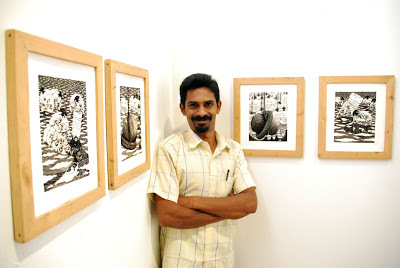
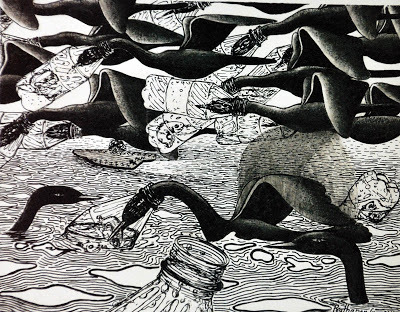
Artist G. Prathapan's art works have shown the damage being done to the environment through the excessive use of plastic. His works were displayed at the Kaarisilta Biennale in Finland, the only Indian to be selected
Photos by K. Shijith
By Shevlin Sebastian
One evening, artist G. Prathapan went for a walk in the town of Mattancherry. After a while, he reached a river. He stood on the side and got into a ruminative mood. Suddenly, he saw a tiny movement on one side. The sleeve of a shirt which was floating in the water was moving. He edged closer to the water.
Prathapan realised something was struggling to break free inside the shirt. So, he took a long stick and began to pull at the shirt. It took a while before the shirt could be removed. And then he noticed the tortoise swimming purposefully away. “I felt so glad that I could free it,” says Prathapan, at the David Hall Art Gallery in Fort Kochi. “And it opened my eyes.”
When Prathapan looked around he was amazed to see a large number of plastic bottles and packets floating around. When he peered closer at the edge of the shore, he saw tiny fish floating inside condoms filled with water.
Prathapan felt disturbed. “Man was destroying the environment,” he says. Soon, he began doing drawings by pen. In one he has shown a seagull which has pushed his beak inside a plastic bottle to eat the fish but his neck gets stuck in the rim. In another, he has shown small fish swimming inside a condom. A tortoise’s head is also stuck inside a bottle.
Prathapan has also drawn an aquarium which contained fish and placed it by the side of the ocean. He then drew a blanket on top of the aquarium. “The fish are asking, ‘Where is the sea?’ They are trapped inside an artificial container made by man,” he says. “Are we doing right?”
When the Kaarisilta Biennale in Finland asked for entries, Prathapan sent these images. It was liked and he was selected. He was one among 197 artists who showcased their works, but the only one from India. Says Johanna Immeli, the curator of the Biennale, “The jury was very impressed by Prathapan's drawings. The subject matter of plastic waste is very important. It is a problem all over the world. This appears in the news often. Many visitors liked Prathapan's works. They stood and observed the drawings for a long time. It made them think, they told me later.”
For Prathapan it has been an exciting moment. “Usually, participation in most Biennales is by invitation only,” he says. “So I was glad that I got a break.”This is his first international exposure. Prathapan is a full-time artist, who has participated in state and national solo and group exhibitions over the years. He has won a few state awards. But even though he has sold a few works, it has been difficult to make ends meet. “But art is my passion,” says the 41-year-old artist.
Meanwhile, Prathapan continued to do research on the Internet on plastic pollution. “I was shocked to realise that the plastic menace is a worldwide problem,” he says. “When you throw plastic into the rivers, it solidifies and forms a mountain under the sea. The amount of oxygen underwater becomes less. Many small fish are dying because of this.”
He made more discoveries. “If you throw plastic anywhere it ends up in the sea somehow,” he says. “So, please do not throw rubbish on the road or in your backyard.”
Prathapan is planning to focus on this subject for a while now. “We need to highlight the problem so that people become aware of how our planet is being destroyed,” he says.
#GPrathapan #KaarisiltaBiennale #Finland #Mttancherry
Published on March 04, 2018 21:48
February 28, 2018
Much Ado About Shakespeare
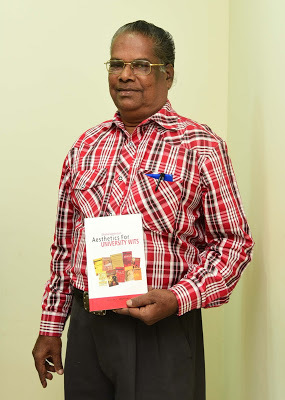


Prof C. Marydass has enjoyed a lifelong love for the master’s works. His work, ‘Shakespearean Aesthetics for University Wits’ has just been selected as a reference book at MG University.
By Shevlin Sebastian
Photos: Prof C. Marydass by Albin Mathew; William Shakespeare and the speech
Teacher Mary Camoens stood in front of the blackboard and said:
“The quality of mercy is not strained,It droppeth as the gentle rain from heavenUpon the place beneath: it is twice blest;It blesseth him that gives and him that takes.”
Most of the Class 10 students at the Infant Jesus Anglo Indian School at Tangasseri looked on attentively as Mary carried on reciting the speech by Portia from William Shakespeare’s play, ‘The Merchant Of Venice’.
But there was one student who was awestruck. His name was C Marydass. Little did he know then that Mary would engender in him a lifelong love and admiration for Shakespeare.
After getting a doctorate in English literature, Prof Marydass spent decades teaching Shakespeare to graduate and post-graduate students of Sacred Heart College, Thevara. Following his retirement in 2001, he taught at the Sree Sankaracharya University at Kalady and is now an Academic Counsellor with The Indira Gandhi National Open University (Kaloor Regional Centre).
And he had a bit of good news recently. His work, ‘Shakespearean Aesthetics for University Wits’ has been selected as a reference book for English literature students at MG University. He is hoping his other books – ‘A Shakespearean Vision of Human Regeneration’, ‘Shakespeare's Regeneration plays: A Metacritical Perspective’ and ‘What Yokes Shakespeare and Tagore?’ – will be selected.
Asked why Shakespeare is being read after 400 years, Marydass says, “His work contains universal themes. Human relationships are the same all over the world. Shakespeare holds a mirror up to human nature and society.”
The English dramatist concentrated on some major themes. “In the comedies, like ‘All’s Well That Ends Well’, and ‘As You Like it’, he focused on the subject of love at first sight. It culminates in family happiness and social union,” says Marydass. “In the tragedies (‘Julius Caesar’, ‘Macbeth’) we have the great paradox of human nature: the fullness of life in contrast to its brevity, culminating in death. As a dramatist, he was able to sketch people from all walks of life. So his characters are very realistic.”
Asked about the play he likes the most, Marydass mentions ‘The Tempest’. “It is Shakespeare's most humanistic play,” he says. “And it reflects the father of humanistic philosophy René Descartes who had stated that man is a composite of body and mind, unified in a transcendental way.”
While Shakespeare dealt in lofty principles, he was an ordinary man in every sense of the word. “In fact, he was a ladies' man,” says Marydass. “He loved many women and took delight in romance. But he did feel he was a morally weak man. However, when he married Anne Hathaway, who was eight years senior to him, Shakespeare stopped his womanising. He realised that family life is sacred. In his romances (‘The Winter’s Tale’/’Cymbeline’), he upheld the sanctity of friendship and marriage.”
As he went about writing his plays, Shakespeare also faced a lot of opposition. “He was always the centre of rivalry and jealousy,” says Marydass. “Scholars who were associated with Oxford and Cambridge Universities felt that they were the intellectual leaders of the time. Shakespeare had only a school education. They considered him an upstart, who borrowed his ideas.”
In fact, for his historical and romantic plays, Shakespeare had culled material from ‘Holinshed's Chronicles’, by writer Raphael Holinshed, which explores British history at length. As for his tragedies, he depended on Thomas North’s 'The Lives Of The Romans And The Grecians'.
Meanwhile, Marydass is frank enough to admit that students in Kerala find Shakespeare outdated. “The main reason is the language,” says Marydass. “Shakespeare wrote Latinised English. To understand Shakespeare you need to know a bit of Latin.”
These days, there are other options in the syllabus, too. “They can study subjects like feminism, Canadian, American and Australian literature, besides Indian writing in English,” says Marydass. “They are not interested in the Renaissance period of England, in which Shakespeare thrived. I believe the only way Shakespeare will remain relevant in Kerala is on the stage, where his plays can be enacted rather than through the printed word.”
(The New Indian Express, Kochi and Thiruvananthapuram)
Published on February 28, 2018 23:42
February 26, 2018
Timeless And ageless
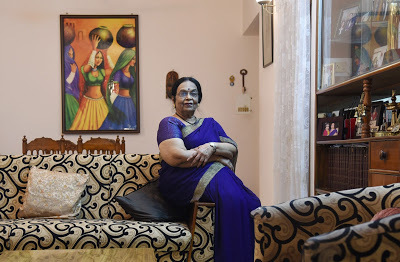
At 81, Lalitha Das, the founder of the Bangalore Club for Kathakali and the Arts, is busy promoting the art form
Photo by Vinod Kumar T
By Shevlin Sebastian
On most mornings, these days, Lalitha Das is on the phone. Either she is calling up Kathakali dancers or speaking to hotel employees or tour operators or sponsors. That is because she is preparing for an upcoming Kathakali production. “All the artistes will be coming from Kerala,” says Lalitha, the founder of the Bangalore Club for Kathakali and the Arts. “There is a lot of hard work behind the scenes. But I feel confident after our last programme went off so well.”
This took place at the Chowdiah Memorial Hall on a balmy October evening where the Kathakali classical opera, ‘Karna: The Invincible’ was enacted. In the first scene, the dancers stood one behind the other and raised their hands to the heavens. Right behind, on a screen, there was an image of the orb of the sun rising between two mountain peaks.
“In this scene, Kunthi asks for a boon and is granted a son by the Sun God,” says the director and scriptwriter Meena Das Narayan. In the next scene, Karna the baby is adopted by a charioteer and wife and grows up as a commoner. Eventually, he becomes an ace archer who challenges the Pandavas and Kauravas in a display of strength.
Watching from a corner with a smile on her face is Meena’s mother Lalitha. The sequences of the sumptuous cultural extravaganza are dramatic, with dancers wielding maces and jumping across the stage accompanied by pulsating music. Karna is played by Kathak dancer Tushar Bhatt, while his wife Pooja has done the choreography. A total of 55 artistes are taking part.
The idea for a cultural club came up over a dinner conversation that Lalitha had with Meena and her husband, Narayan, after her husband KG Das passed away in 1999. “It became difficult for me to travel to Kerala on my own to watch Kathakali performances. I felt that through the club, we could popularise as well as watch Kathakali in Bengaluru,” says Lalitha.
Today, the club is thriving. But Lalitha has a clear agenda. “I want to promote Kathakali among other communities, like the Kannadigas, Tamilians and the Telugu people,” she says. “Hence, the mudras are explained in detail so that the audience can follow the performance and understand it.”
Apart from Kathakali, the club promotes other classical dance forms like the Kuchipudi, Mohiniyattam and Bharatanatyam.
But the emphasis is on Kathakali. “It is an enduring love,” says Lalitha, who learnt the dance form as a child while growing up in Thiruvananthapuram. Thereafter, at age 17, she got married and left Kerala. Since her husband, a chief engineer, had a transferable job, she moved from place to place: Burla (Odisha), Delhi, Pune, Baghdad and Tripoli. Sometimes, she would organise Kathakali performances whenever the couple were in India.
Asked the charms of Kathakali, Lalitha says, “Kathakali is a combination of excellent music, percussion, and action. There is no other art form that combines all three so well. And the artistes are so dedicated and look beautiful.”
Not surprisingly, her idol is the legendary Kalamandalam Gopi. “When he is in full costume, like Karna, he takes us back to that era,” says Lalitha. “He has the magic to immerse himself in the character. And his eyes are so expressive.” Incidentally, Meena made a documentary on Gopi, called, 'The Making Of A Maestro', which won the Kerala State Award for best documentary in 2010.
Meanwhile, when asked about her future plans, Lalitha says, “I plan to conduct at least five to six performances every year. At 81, I am having the time of my life.”
(Sunday Magazine, The New Indian Express, South India and Delhi)
Published on February 26, 2018 22:23
No Harm To Mother Earth



The banana fibre sanitary pads brought out by the Amrita SeRVe (Self Reliant Village) project of the Mata Amritanandamayi Math, can be reused for three years and do not harm the environment
Photos: From left: Anju Bist, Swadha Dwivedi, and Deepa H. Photo by Albin Mathew; Sanitary pads
By Shevlin Sebastian
On October 9, last year, Mata Amritanandamayi's birthday, several stalls were set up at Amritapuri, Kollam. One of them was selling reusable sanitary pads. The stall was manned by Swadha Dwivedi, 19. Soon, a middle-aged man came up and said, “How did you come up with this idea?”
Swadha felt embarrassed and said, “This stall is only for women.”
The man said, “You are being discriminatory. You can tell us, men, too.” Later, when Swadha told Mata Amritanandamayi about this incident, the latter said, “You are US born and brought up. So you should not feel shy. You must stay strong. By talking about the pad with a man, you can remove the stigma around menstruation.”
The pad in question is called Saukhyam, a Sanskrit word which means happiness and well-being. It is made of banana fibre. “It is a naturally occurring absorbent substance and has medicinal properties,” says Anju Bist, co-director Amrita SeRVe (Self-Reliant Village). “Nobody has used banana fibres for reusable pads. Amma wanted us to do this.”
First, the stalk is cut. Then it is put in an extractor machine, where it is converted into thin strips. These have to be washed in baking soda, to make them soft. Thereafter, they are dried in the sun for five days. Then several women in villages administered by Mata Amritanandamayi make the pads. “It provides a livelihood for them,” says Anju.
The great advantage of these pads is that they can be reused. “You can wash it and put it out in the sun to dry,” says Anju. “Also, since they are highly absorbent, a working woman does not have to change them during the time she spends at the office. Finally, there is an urgent necessity for these pads, because of the environmental damage caused by disposable sanitary pads.”
Here are the alarming statistics: Over the entire menstruating life of a woman she will discard anywhere between 10,000 to 15,000 pads. “There are 360 million women who are of menstruating age in India today,” says Swadha. “If, on an average, they use 12 to15 pads per monthly cycle it will add up to 432 million soiled pads that weigh 900 tonnes and enough to fill 320 football fields.”
Meanwhile, one of the attractive qualities of Saukhyam is that it is available in different colours like red, green, yellow and blue. “We want people to buy their pads as if they are buying a salwar kameez,” says Deepa H, a staff member of Amrita Vishwa Vidyapeetham. “The aim is to remove the stigma around menstruation. Another reason is that because of the fabric, the stains are not visible.”
The prices range from Rs 200 to Rs 2000 depending on whether you are buying individual day/night pads or in packs. “But these can be reused for up to three years,” says Anju. “On the other hand, a woman ends up spending Rs 60,000 over her entire menstrual period during her lifetime.”
The good news is that customers are happy. “I have used these pads for a year now and feel very comfortable. The banana fibres do absorb well. I like the idea that these pads use natural resources,” says the Mexico-based Padma Gonzales. Adds Sudha Pillet from France: “These washable pads are practical and healthy. They prevent the use of synthetic materials which are harmful to the environment and our health. They are ideal for everyday life. The washing is easy and the pads dry quickly.”
Sunday Magazine, The New Indian Express, South India and Delhi)
Published on February 26, 2018 01:01
February 21, 2018
Speaking Non-Stop In Front Of Mammootty
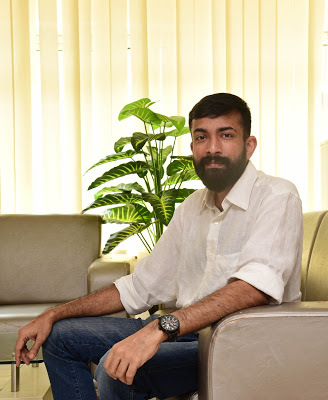
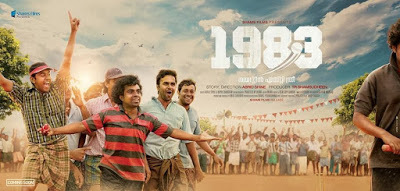
Scriptwriter Bipin Chandran talks about his experiences on the sets of 'Daddy Cool', 'Best Actor' and '1983'
Photos: Bipin Chandran by Albin Mathew; the post of the film, '1983'
By Shevlin Sebastian
When college friend Aashiq Abu asked Bipin Chandran to write a script, he wrote 'Daddy Cool' (2009). In the early part of the film, there is a scene where a news anchor speaks at length, giving the hero Mammootty only the chance to say 'Yes' or 'Aaah'.
“It was a time when TV anchors were coming to prominence, and they would rarely allow their guests to speak,” says Bipin. Aashiq felt a mimicry artist would be able to do the job. But they just could not get the right person. During this time, Bipin would read out aloud the dialogues for the cast and the crew. One day, Aashiq said, “Why don't you say the ‘anchor’ dialogues?” Bipin replied, “No way.” However, in the end, he agreed.
On the day of the shoot, at Kochi, Bipin's heart was racing fast. “I had to act opposite Mammootty,” says Bipin. “It was like coming in front of a lion. He was an icon who had won three National Awards. People on the set were also nervous.”
The shoot began. After taking a deep breath Bipin launched into the two-and-a-half page dialogue. “I let it flow and, to my surprise, it was okayed in one take,” says Bipin. “The entire crew clapped because I had done it so well.”
Mammootty said, “You do know how to act. Well done!”
But when Bipin gave another two pages of non-stop dialogue, Mammootty smiled and said, jokingly, “Your throat is going dry. Drink a glass of water before saying anything more.”
Indeed, Bipin is a fluent speaker but he always had problems with the Hindi language right from his school days at Kanjirappally. “I used to memorise most of the answers,” he says. One such quote that he never forgot was the one given by Noble Prize-winning physicist Albert Einstein on the 70th birthday of Mahatma Gandhi: 'Generations to come will scarce believe that such a man as this one ever in flesh and blood walked upon this Earth'.
Meanwhile, in 'Best Actor, Mammootty plays a school teacher who pretends to be a criminal from Mumbai as he befriends some goondas at Fort Kochi. “During a fight, Mammootty takes out a toy gun, and in order to impress the criminals, he spouts the Einstein dialogue in Hindi,” says Bipin.
At the time of the shoot, Bipin was teaching in a government school at a tribal area in Mundakayam.
Suddenly he got a call. It was from Mammootty who said, “You wrote all these Hindi dialogues and now you are teaching in a school. Please come to the set.”Mammootty needed somebody to prompt him. So, Bipin immediately took a taxi and came to the set at Kochi.
Based on instructions from director Martin Prakkat, cinematographer Ajayan Vincent had made a circular track. “Since Martin wanted to take it in one shot, I could not stand next to Mammootty,” says Bipin. “So I sat under the camera, on the trolley and prompted Mammootty and that was how the shot was done. Of course, Mammootty had already memorised the dialogues, so he was able to do it in one take.”
Later, in the premiere show, when Mammootty said the dialogue the audience burst into applause. “It went down very well,” says Bipin. “So, a language which I found very difficult to handle in school turned out to be very helpful two decades later.”
Bipin used another dialogue from his childhood. This was a question he would ask his teachers: “Where do crows go to die?” Nobody could give a proper answer. “When we were studying in Maharaja's College, there was a tree nearby which had hundreds of crows,” says Bipin. “I would always ask my friends the same question.”
Once, during the time he was writing the script for '1983', he was sitting with his friend Abrid Shine and a few friends at a lodge in Kochi when he recounted this story. Immediately, Abrid said, “You should put it in the film.”
And so, there was a scene in the film, when Jacob Gregory, who played a character called Sachin, looked at a crow which has been electrocuted and had fallen to the ground and says, “Where do crows go to die?” Ever since, there have been numerous memes and comments on Facebook and on Twitter. “Somehow, this question is something viewers have never forgotten,” says Bipin. “Interestingly, so far, I have not received a proper answer.”
(The New Indian Express, Kochi, Thiruvananthapuram and Kozhikode)
Published on February 21, 2018 22:12



